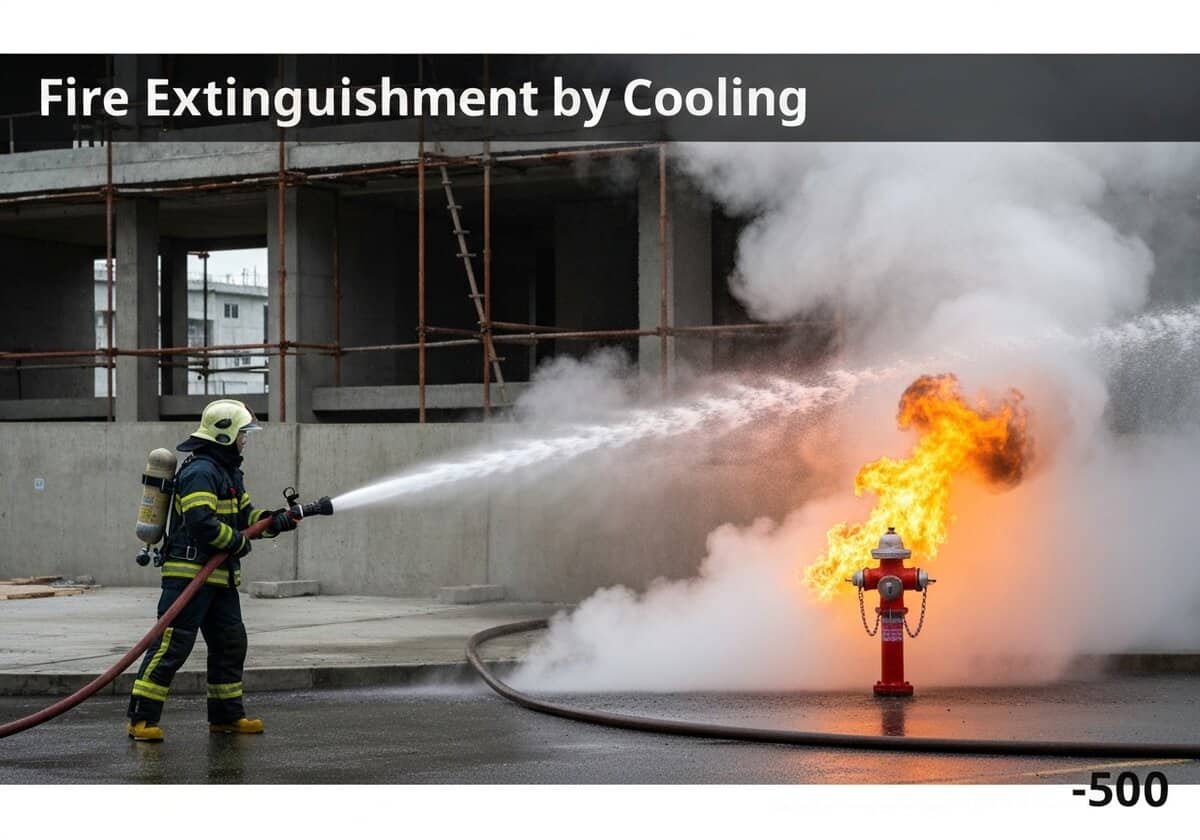A primary method of fire extinguishment involves removing the ‘heat’ component of the fire triangle. This is most commonly achieved by applying a substance that absorbs a large amount of heat, such as water (despite water also have other effects in the fire triangle -refer to dedicated post-). Water’s high specific heat and latent heat of vaporization make it highly effective at cooling a fire below its self-sustaining temperature.

















